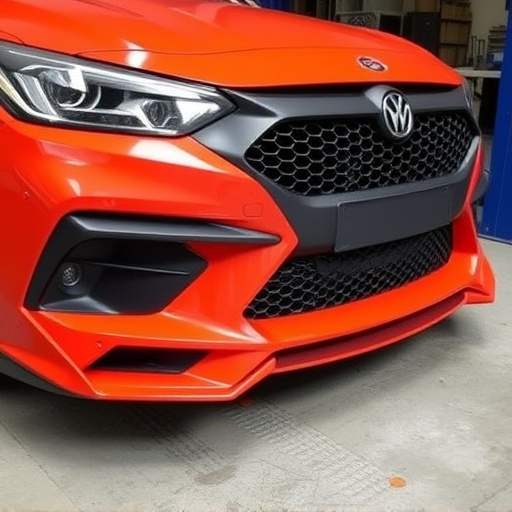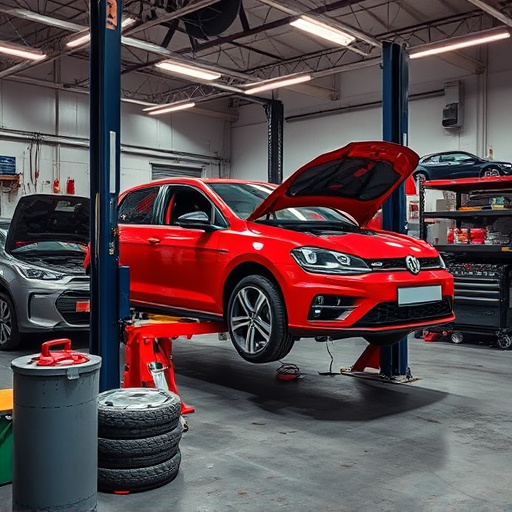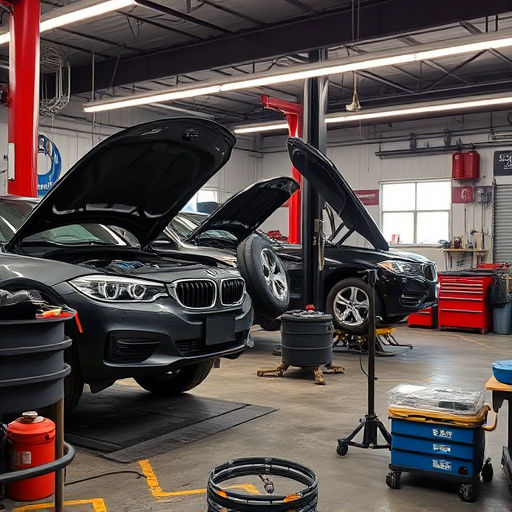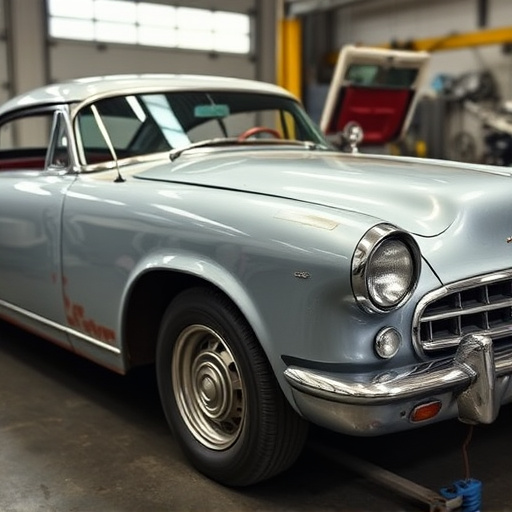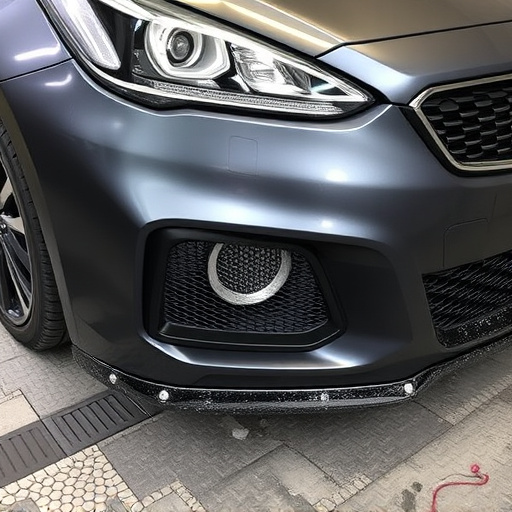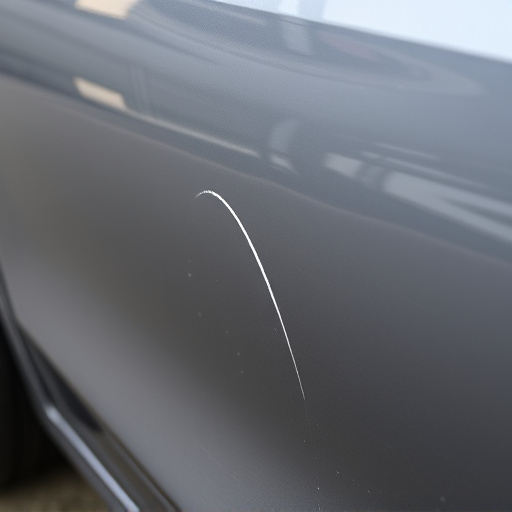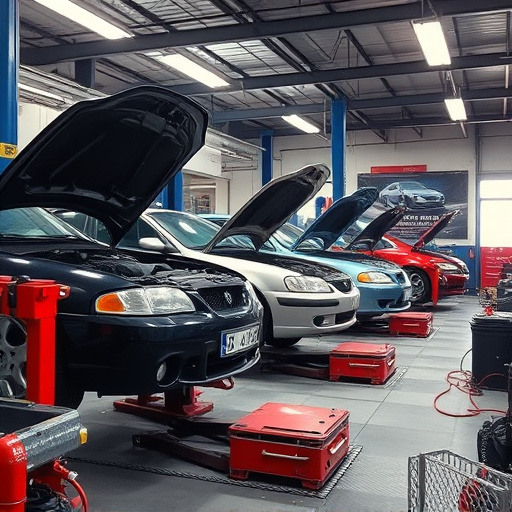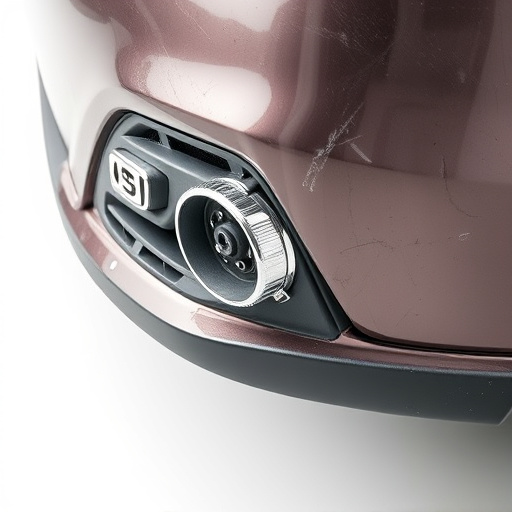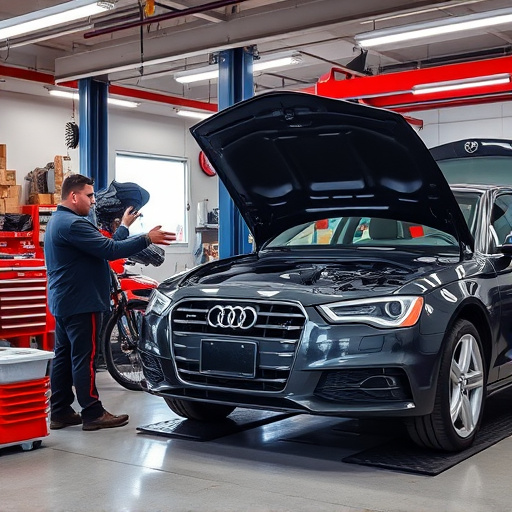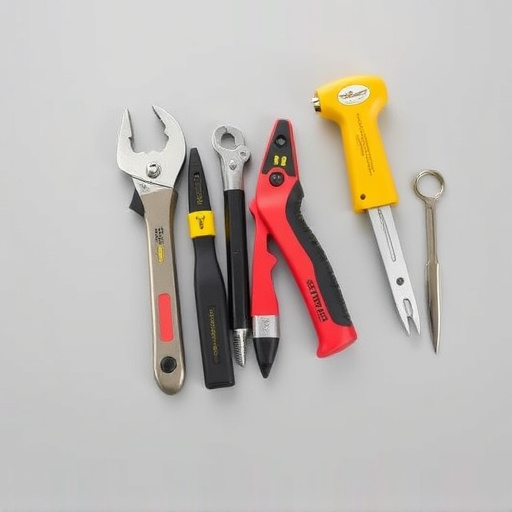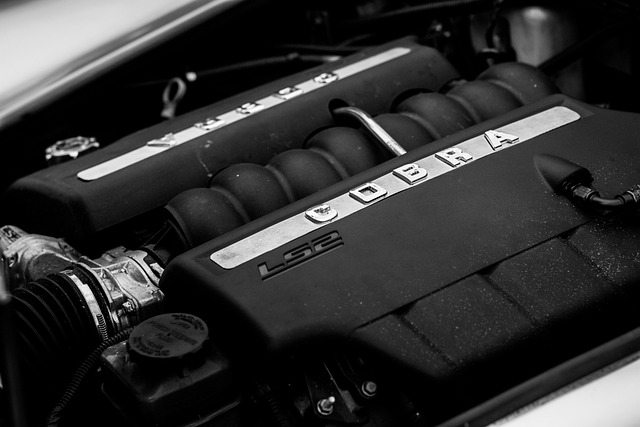Precision frame alignment is crucial for vehicle safety and resale value after accidents or structural damage. Skilled professionals use specialized tools to detect and correct misalignments in a car's metal frame, impacting steering, handling, and cosmetic repairs. This meticulous process supports other auto body repairs, enhances appearance, preserves safety features, and significantly boosts a vehicle's resale value. Regular inspections by qualified technicians are essential for maintaining structural integrity and future marketability, especially in older or collision-prone cars.
Precision frame alignment is a critical yet often overlooked aspect of vehicle maintenance. By ensuring the structural integrity of a car or truck, it helps preserve resale value by minimizing damage and maximizing its overall condition. This article delves into the fundamentals of precision frame alignment, exploring its profound impact on a vehicle’s marketability and offering practical tips for upkeep to ensure longevity and peak performance. Understanding these concepts can empower both car owners and dealers alike.
- Understanding Precision Frame Alignment: The Basics
- How Precision Frame Alignment Affects Resale Value
- Best Practices for Maintaining Frame Alignment in Resale Vehicles
Understanding Precision Frame Alignment: The Basics
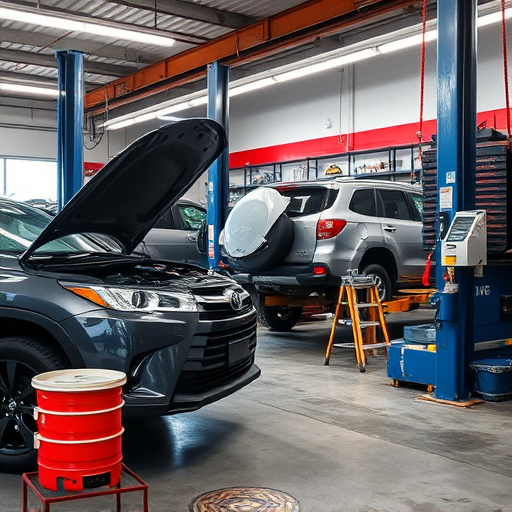
Precision frame alignment is a crucial process that involves carefully adjusting the metal components of a vehicle’s frame to restore it to its original factory specifications. It’s not just about making a car look good; it ensures critical safety features are maintained and can significantly impact the resale value of a vehicle. When a car undergoes collision repair or experiences damage from a minor accident, like a door ding or fender bender, the frame can be misaligned. This misalignment can lead to issues with steering, handling, and even structural integrity if left unaddressed.
Imagine a car as a complex machine where every part is interconnected. A small shift in the frame can cause ripples throughout, affecting suspension, wheels, and even the overall performance. Professionals skilled in precision frame alignment use specialized tools to detect these shifts and make minute adjustments to bring the frame back into its original state. This meticulous process is often compared to a fine art, requiring both technical expertise and an eye for detail. Moreover, it plays a vital role in facilitating other services like paintless dent repair or car scratch repair, ensuring that any cosmetic enhancements are done on a perfectly aligned canvas.
How Precision Frame Alignment Affects Resale Value
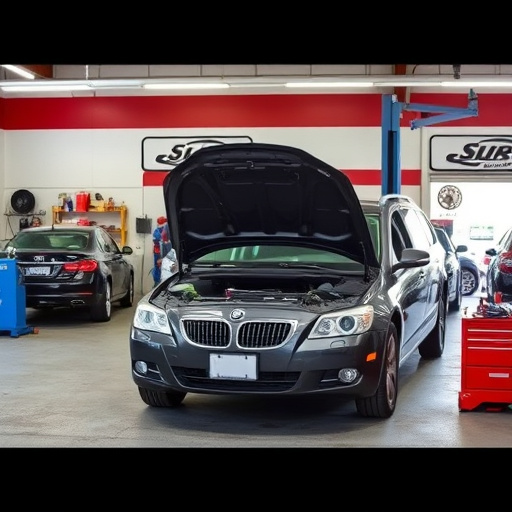
Precision frame alignment is a crucial process that significantly impacts the resale value of vehicles. When a car undergoes precision frame alignment, any damage or misalignment to the vehicle’s structural framework is corrected accurately and meticulously. This meticulous repair involves realigning the vehicle’s metal components to their original factory specifications, ensuring the car retains its optimal shape and integrity.
As a result, precision frame alignment not only enhances the overall appearance of the vehicle but also preserves its safety features. A well-aligned frame reduces the risk of mechanical issues and accidents, which are common concerns among potential buyers. In the world of auto body repairs, collision repair centers that offer precision frame alignment services can significantly increase the resale value of a vehicle by ensuring it meets high-quality standards. This process is especially beneficial for those looking to sell their vehicles privately or through dealerships, as it instills confidence in prospective buyers regarding the vehicle’s history and condition.
Best Practices for Maintaining Frame Alignment in Resale Vehicles
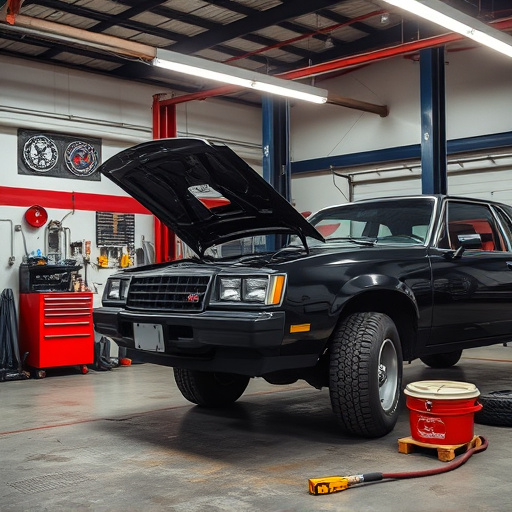
Maintaining proper frame alignment is a key aspect of preserving the resale value of vehicles. Regular checks and adjustments are essential, especially for older cars or those with a history of collisions. Here are some best practices to ensure your vehicle’s structural integrity remains optimal.
One of the primary steps involves scheduling routine inspections by qualified automotive technicians who can identify any misalignments using advanced tools. Prompt collision repair or vehicle body repair is crucial if any issues are detected. Additionally, regular washing and undercoating can protect the frame from road salt and other elements, preventing corrosion that might affect alignment over time. Regular maintenance not only enhances resale value but also ensures safer driving conditions.
Precision frame alignment is a key factor in maintaining and maximizing resale value for vehicles. By ensuring the chassis remains straight and damage-free, potential buyers are assured of a reliable and safe driving experience. Implement best practices such as regular inspections, proper accident repair techniques, and consistent maintenance to keep the frame in optimal condition. Investing in precision frame alignment not only preserves value but also ensures the vehicle’s structural integrity for years to come.
